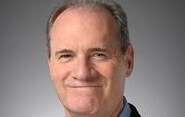 SPECIAL REPORT: Lewis Carroll once wrote, ‘If you don't know where you are going, any road will take you there.’ This might be an appropriate aphorism when considering the state of the housing market. In the three years since the Lehman Brothers collapse, the housing market and the wider economy remain fragile, and fears of a double-dip recession continue to percolate. The road to recovery has been full of potholes, detours, dead ends and obstacles – and the desired destination remains elusive.
SPECIAL REPORT: Lewis Carroll once wrote, ‘If you don't know where you are going, any road will take you there.’ This might be an appropriate aphorism when considering the state of the housing market. In the three years since the Lehman Brothers collapse, the housing market and the wider economy remain fragile, and fears of a double-dip recession continue to percolate. The road to recovery has been full of potholes, detours, dead ends and obstacles – and the desired destination remains elusive.
However, there are still a number of ideas on how to get the housing market back on its feet. And in the opinion of Berkshire Hathaway Chairman and CEO Warren Buffett, the housing market will lead the rest of the economy to a brighter future.
‘We will come back big time on employment when residential construction comes back,’ Buffett said in a July interview with Bloomberg Television. Earlier in the year, Buffett predicted that a housing recovery would commence ‘within a year or so.’
However, Buffett's view is not widely shared. Dr. Peter Morici, professor of economics at the University of Maryland's Robert H. Smith School of Business, points out that others have also touted the billionaire investor's optimism, with no visible evidence of results.
‘Economists were foolish to place so many hopes on a housing-market recovery and consumers,’ he says. ‘Millions of unsold homes will impel slow housing construction for many years, and consumers can't be expected to spend a lot more if too many of their dollars go abroad to pay for expensive oil and Chinese goods and don't return home to create jobs.’
Indeed, a prevailing concern within the mortgage banking industry involves the bleak national unemployment figures and their negative effect on the wider economy.
‘Unemployment is the single biggest problem,’ says Steve Ozonian, chief real estate officer at Santa Ana, Calif.-based Carrington Holding Co. ‘People who do not have jobs will not buy homes. We are very fortunate that we have a low interest rate. But if we don't fix unemployment before the interest rates creep up, we will have another problem on our hands. We don't have the stars aligned yet.’
Robert J. DeWit, president of Manhattan Bank, based in Manhattan, Mont., believes that the U.S. employment picture runs the risk of mirroring the less-than-satisfactory situation occurring across the Atlantic.
‘If I understand correctly, Germany was ecstatic last year when they got their unemployment rate down to 7.5 percent – the lowest in many, many years,’ he says. ‘And they are the bright economic spot in Europe! We used to think that five percent unemployment constituted full employment in America. But from what I've read, the primary difference between the Euro-zone economy and the U.S. economy was the degree of regulation. As we ramped up our regulation over the last few years, I don't think it is any longer reasonable to assume five percent unemployment will constitute full employment.Â
‘Going forward, I expect our full rate of employment will be closer to Europe's standards than our historical rates,’ he continues. ‘In other words, I think we'll be doing a great job to get the unemployment rate below seven percent in the foreseeable future. That doesn't bode well for a quick housing recovery.’
John Walsh, CEO of Total Mortgage Services, based in Milford, Conn., sees the residue of the recession creating an endless loop of financial instability.
‘It is a vicious cycle,’ he says. ‘People lose their jobs, then they lose their credit, then they cannot buy homes, and the process goes down. I don't know what the magic bullet is.’
But if there is no magic bullet, is there at least a strategy – or even the blueprint for a strategy – for the housing market to heal itself? Industry experts believe that some solutions are available, yet they will take time and patience to enact.
Out of the shadows
A major problem is the challenge posed by the so-called ‘shadow inventory’ to the origination market. Many of these properties are in a state of limbo due to financial difficulties experienced by their homeowners and the problems involving the servicing of their home loans. According to Richard Rydstrom, chairman of the Los Angeles-based Coalition for Mortgage Industry Solutions, the shadow inventory stretches far and wide.
‘This includes real estate owned properties (REO) pending, pending foreclosure inventory, pending seriously delinquent inventory, properties that were recently cured but are expected to redefault, 90-days delinquent properties; actual foreclosures, actual REOs, current but negative equity loans, etc.’ he explains.
How many properties exist in the shadow inventory? Well, it depends on which industry expert you ask.
‘The shadow inventory is estimated at a little over 2 million properties,’ says Selma Hepp, research economist at the National Association of Realtors.
‘We've passed the peak on shadow inventory,’ says Sam Khater, senior economist at Santa Ana, Calif.-based CoreLogic. ‘It is at 1.7 million. The peak was 2 million in January 2010.’
‘If we measure just by delinquent loans, it is close to 7 million,’ says Grant Bailey, managing director and head of U.S. residential mortgage-backed securities surveillance at Fitch Ratings. ‘Of these 7 million, close to 2 million are in foreclosure. That's a lot, relative to the number of houses sold annually, which averages 4.5 million.’
‘We look at it by totaling up the number of homes in 90-plus-days delinquency and foreclosure, which is at 3.8 million,’ says Celia Chen, senior director at Moody's Analytics. ‘That is not much down from its peak of 4.12 million in the first quarter of 2010. In 2005, by comparison, the shadow inventory was approximately 750,000.’
Although there is a difference of opinion on the depth of the shadow inventory, there is agreement on how this unfortunate sector became so large. Janet Dedrick, a strategic consultant with Atlanta-based Equifax Analytical Services, notes that consumer financial problems are keeping the shadow inventory alive.
‘Bankruptcy rates are almost as high as foreclosure completion rates,’ she explains. ‘People file bankruptcy in order to save their homes. That is not typical, but we are living through an unusual period.’
Dedrick does not see a near-term happy ending to this scenario. ‘Early-stage delinquencies are down, but they are still elevated,’ she says. ‘Late-stage or severe delinquencies – when three or more payments are delinquent – are still above $500 billion. I'm assuming that most of these people are going to lose their homes.’
Diane Westerback, managing director of Standard & Poor's Global Surveillance Analytics, states that the volume of properties within the shadow inventory ‘is two to 2.5 years above normal’ and that resolving the problem is stymied due to problems that arose in the past year regarding foreclosure procedures by the major servicers.
‘The court system has ground to a halt in a lot of areas,’ she says. ‘This is impeding progress.’
Cheryl Lang, president of Houston-based Integrated Mortgage Solutions, ruefully concurs.
‘Between REO and the shadow inventory, when will there be a housing recovery?’ she asks. ‘We're still kicking the can down the road. I see the shadow inventory looming over us for at least five years. This is mind-boggling in an age when we're not in a depression.’
A foreclosure stop sign
One proposal to address the massive foreclosure issue is the implementation of a moratorium on foreclosures. In April 2007, a coalition of consumer advocacy and civil rights organizations called for such an action. In his 2008 presidential campaign, Barack Obama called for a national 90-day foreclosure moratorium. ‘We need to give people the breathing room they need to get back on their feet,’ he said.
However, Obama's campaign idea was never brought about once he became president. In early 2009, the president requested that servicers enact a brief voluntary foreclosure moratorium prior to the implementation of the Making Home Affordable plan. In October 2010 – nearly two years after Obama raised the moratorium idea while seeking the presidency and a month after the media furor over robo-signing began to rage – senior adviser David Axelrod nixed the possibility of bringing campaign rhetoric into domestic policy.
‘It is a serious problem,’ Axelrod said. ‘I'm not sure about a national moratorium, because there are, in fact, valid foreclosures that probably should go forward. Our hope is this moves rapidly and that this gets unwound very, very quickly.’
When the robo-signing controversy took root in fall 2010, several financial institutions and state governments enforced temporary moratoria in the face of media and political scrutiny: When the dust settled from the brouhaha, the foreclosure process resumed, albeit slower than before.
Among industry experts, the idea of a foreclosure moratorium draws sharply divided responses. Dr. Dan Immergluck, associate professor at the Georgia Institute of Technology and author of ‘Foreclosed: High-Risk Lending, Deregulation and the Undermining of the American Mortgage Market,’ is in favor of strategies that will slow the foreclosure machinery as a means of stabilizing housing prices.
‘The best thing in the last two years was the foreclosure document problem – it threw sand into the gears of the foreclosure process,’ he says. ‘The markets are clearly based on how much supply we have, and more supply leads to lower prices. Absorption is the key, and doing things to stop the supply from building up again is the best thing until demand kicks in. Otherwise, we have more and more supply.’
On the other side of the argument is Leslie Rennell, CEO of Cleveland-based Resource Title National Agency.
‘We should not go that way,’ she says. ‘We need this market to bottom out. It is a controversial issue, but a moratorium will extend the crisis in the real estate market. Sooner or later, we have to take our bitter pill. Right now, there are a lot of people living rent-free because of the clogs in the system.’
Mark Greco, president of 360 Mortgage Group LLC in Austin, Texas, observes that the financial services industry is caught in a lose-lose situation of not wanting to flood the market with inventory while trying to resolve the growing state of distressed mortgages.
‘The large banks are doing their best to control inventory by not putting all of their REOs on the market,’ he explains. ‘Today, the market is not necessarily a case of surplus of inventory, but a deficiency on the demand side, which is driven by consumer confidence.’
But the debate is still ongoing. In July, Rep. Marcy Kaptur, D-Ohio, has submitted a resolution to the House Financial Services Committee that would give the White House the ability to establish a temporary national foreclosure moratorium. Her effort, however, was never publicly acknowledged by the White House and was mostly ignored by the Republican leadership in the House of Representatives.
Federal withdrawal
One idea for a housing market recovery that mortgage banking industry experts agree on is less onerous intervention by the federal government.
‘I don't know if the federal government has done anything to make a tremendous difference,’ says Patrick F. Stone, CEO of Williston Financial Group, based in Lake Oswego, Ore. ‘It is a supply-and-demand issue – millions of unoccupied homes drive prices down. The more government tries, the more they prolong the crisis.’
‘The government response to the crisis is effectively more of the poison that caused the crisis,’ says Alex Epstein, fellow at the Irvine, Calif.-based Ayn Rand Center for Individual Rights. ‘The solution is disentangling government from housing. We need to look at every agency and every artificial tax deduction and figure out a way to phase them out. There has been way too much pandering to people who took out loans during housing bubble and who want their artificially high property values propped up.’
Dr. Anthony B. Sanders, distinguished professor of real estate finance at George Mason University in Fairfax, Va., questions whether the federal government ever had a handle on the crisis.
‘I always had the feeling that the federal government wasn't serious about modifying loans,’ he says. ‘The size of the negative-equity problem and rising unemployment were known to the Obama administration from the beginning, when they implemented the Home Affordable Modification Program (HAMP). Households were on their way to losing $7 trillion in home equity, and HAMP's budget was $75 billion. HAMP represented trying to stop a tsunami with a one-foot seawall.’
Within the current push for federal austerity, the notion of eliminating the mortgage-interest tax deduction has been raised by some observers. However, Carrington Holding Co.'s Ozonian does not see that happening.
‘The chance of repealing the mortgage interest tax deduction is very slim,’ he says. ‘All Americans get a benefit from the mortgage interest deduction when purchasing real estate. It is not just for the wealthy. It is for everyone that buys a home.’
However, Manhattan Bank's DeWit believes removing the deduction is part of a wider strategy to push Washington back from the housing market.
‘In the long run, the market would be healthiest if the federal government got out of the industry altogether – removing the mortgage interest deduction as part of a flat tax program and staying out of the guarantee/securitization issues for all but very specific programs for the poor, etc.,’ he says. ‘Then, housing would actually have the value it provides as housing, not its value as housing plus its value to minimize income taxes.’
Security in securitization
DeWit's reference to the securitization market raises a point regarding the housing market's interconnectivity to the wider financial markets. As previously mentioned, the absence of a private-label secondary market has been filled by the government agencies. The solution for pushing government back from the securitization market remains unclear.
‘At this point, I'm not 100 percent certain where we're going with that,’ says Paola Kielblock, vice president of retail products at Fairway Independent Mortgage Corp., based in Sun Prairie, Wis. ‘But there are so many regulations and reforms happening in the mortgage industry right now that a lot of focus is devoted to them, versus putting our focus on the government-sponsored enterprises.’
The lack of clarity on the issue was further confused in August, when the Washington Post, citing unnamed sources, reported that a team of presidential advisers was drafting a housing-finance reform plan that kept the federal government in a prominent role. The following day, however, U.S. Treasury Deputy Secretary Neal S. Wolin wrote a blog entry on his department's website that insisted the administration ‘believes that the private sector – subject to strong oversight and consumer protection – should be the dominant provider of mortgage credit.’
So what's keeping the private-label residential mortgage-backed securities (RMBS) market out of the game?
‘At base, it's because the underpinning assets – houses – aren't that attractive of an investment,’ says Richard Zahm, director of client development at New York-based Covendium. ‘There's an oversupply of product – something like eight percent of houses are currently vacant – and a shortage of qualified buyers. Plus, there's a looming shadow inventory promising to depress prices further. Overshadowing all of this is the federal default scenario. It's likely that interest rates are going to move higher – and this could happen very quickly. If Treasury yields spike, mortgage rates would, too. The housing market's brittle: lower prices and lower sales could follow.’
Yet Fitch Ratings' Bailey believes today's RMBS represent a viable investment.
‘Underwriting is about as tight as it's ever been, and the new bonds have more credit protection than they've had historically,’ he says. ‘With the exception of loans originated between 2005 and 2008, residential mortgage loans have historically been a strong-performing asset, and we expect them to be in the future.’
A potential wild card in the securitization environment is the creation of a covered-bonds market. Covered bonds are a type of derivative investment backed by the cashflows generated from an underlying investment pool. This investment tool has been popular in Europe since the 18th century. However, according to Dr. Kenneth Snowden, professor of economics at the University of North Carolina at Greensboro, the American experience with the instrument has not been melodious.
‘There was a covered-bonds prototype in the 1880s for the farm mortgage market,’ he explains. ‘But that was annihilated in 1890s during the financial market crisis. In the 1930s, the idea was floated for a covered-bonds market to grow out of the Federal Housing Administration (FHA), but that did not happen.’
Two U.S. banks – Bank of America and Washington Mutual – had small covered-bonds issues in 2006, but the financial crisis delayed efforts to create the regulatory framework for a national covered-bond market. Rep. Scott Garrett, R-N.J., tried to include a covered-bond regulatory framework as part of the Dodd-Frank Act, but that effort never made it into the legislation.
‘Need usually drives change,’ observes Todd Hempstead, senior vice president of investor relations at CMG Mortgage, headquartered in San Ramon, Calif. ‘Up until this point, Fannie Mae, Freddie Mac and the Federal Housing Administration filled the need to do housing finance, and it had been quite successful.’
‘I think it comes down to a combination of not-invented-here, coupled with the immediate revenue potential of the secondary market, entrenched players, disinterested bankers and regulators,’ says Covendium's Zahm. ‘The U.S. hadn't yet suffered the financial trauma that seems to have become part of the DNA of Northern Europeans, nor did we have the history of having to stabilize an economy after extreme military expenditures – the first covered bonds in 1769 came on the heels of some lengthy wars. The U.S. preference has been on generating fees, pushing liability elsewhere and originating still more. Covered bonds are built for stability, longevity and transparency – a solid foundation.’
This summer, Garrett and Rep. Carolyn Maloney, D-N.Y., introduced the U.S. Covered Bond Act of 2011, which passed the House Financial Services Committee. However, Bert Ely, president of Alexandria, Va.-based Ely & Co., predicts the bill will fall victim to Washington's polarized politics.
‘A U.S. covered-bond market will not emerge until Congress passes a strong statute along the lines of the Garrett bill,’ he says. ‘While I believe there is a good chance the House will pass the Garrett bill this year, it is unlikely the Senate will act anytime soon on a covered-bond bill.’
Tomorrow's market
While recovery is taking much longer than expected or desired, many industry experts believe the new and improved housing market will be grounded in a more solid foundation. Scott Stern, CEO of the St. Louis-based Lenders One Mortgage Cooperative, believes that underwriting standards need to be adjusted in order to accomplish this task.
‘We need to come back to a state of normalcy in underwriting,’ he says. ‘We've been too liberal; now, we're too conservative. We need to get back to more of a state of equilibrium.’
Len Israel, president of Santa Ana, Calif.-based Mission Hills Mortgage Bankers, points out that lenders will need to make a concentrated effort to attract potential home buyers that may have been soured by the events of the past few years.
‘Residential financing must continue to be made available for creditworthy, lower-income borrowers,’ he says. ‘A Fannie Mae survey revealed that 'the share of renters believing that buying a home is a safe investment is sharply lower than in 2003, and even fell over the course of 2010.' It's important to recognize that buying is more affordable than renting in many U.S. cities – and with new home supplies at 50-year lows, there is a substantial supply of inventory in the resale market.’
However, Matthew C. Clark, chief operating officer at Brentwood, Tenn.-based Churchill Mortgage Corp., warns that tomorrow's home buyers need to come to the table with a stronger degree of financial maturity.
‘People need to learn to save up for a reasonable down payment,’ he says. ‘It may take a while before we are at a place where people can put down money on a house.’
‘If we live in a world where we have houses, we have to be prepared to accept certain types of leverage and know the trade-off when dealing with risk,’ adds Ann Rutledge, founding principal at R&R Consulting in New York.
‘Sixty percent of all loans that are modified go into default again within the next eight months,’ says Buck Hawkins, residential president of the California Mortgage Bankers Association and senior vice president of capital markets at Los Angeles-based Castle & Cooke Mortgage LLC. ‘It is ultimately a question of what the borrower can still afford. The bottom line is that we've gotten away from the tenets of mortgage lending: the borrower's ability to pay and ability to repay.’
Edward Kramer, executive vice president at Minneapolis-based Wolters Kluwer Financial Services, believes that mortgage bankers will not repeat the mistakes that predicated the current crisis.
‘The industry wants to do a good job,’ he says. ‘Once the dust settles, things will get back to normal. Whatever that normal is remains to be seen.’
But then again, at least one industry leader believes recovery can just take place organically, without overly ambitious planning to bring about instant results.
‘If there is going to be a correction, it will be a natural correction,’ predicts Brian C. Coester, CEO of Coester Appraisal Management, based in Rockville, Md. ‘If you push it too much, you will not do anybody a favor. You can't just hit the reboot button and get it rocking and rolling again. It will take time to recover. I am not saying live and let live – just do not force the issue.’
So where does the housing market go from here? Industry experts agree that recovery will be reached, but the exact route to this treasured destination remains uncertain. Attempts to orchestrate recovery have not been successful, and circumstances beyond the mortgage banking industry's control continue to exert undue pressure and create new havoc.
In many ways, the housing market's path to salvation mirrors the fabled travel directions once offered by baseball legend Yogi Berra: ‘When you get to the fork in the road, take it.’











